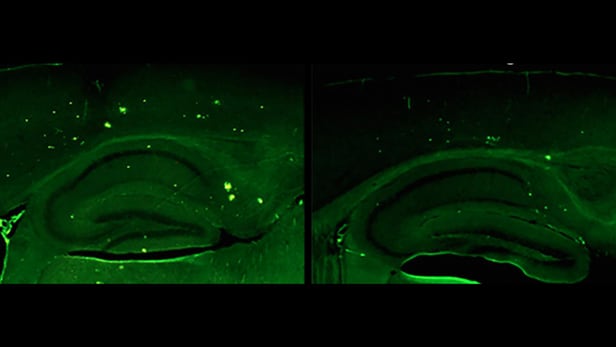
Medical researchers have been interested in the potential of the protein, known asNeuregulin-1, to tackle neurological diseases for a while. It has many functions across the brain, and according to the Salk team, might be useful in tackling everything from Parkinson's to schizophrenia.
"Neuregulin-1 has broad therapeutic potential, but mechanistically, we are still learning about how it works," said senior study author Kuo-Fen Lee. "We've shown that it promotes metabolism of the brain plaques that are characteristic of Alzheimer's."
In relation to Alzheimer's, scientists have previously demonstrated that Neuregulin-1 can lower the levels of amyloid precursor proteins – molecules responsible for generating the dangerous amyloid beta plaques in Alzheimer's patients' brains – on a single cell basis. For the new study, the team raised the levels of the protein in the hippocampus of the brains of laboratory mice with the disease, studying them to see whether similar positive effects were observed.
The testing revealed that the treated mice had improved spatial memory, and that the levels of amyloid beta in the brain were noticeably lower than in the control subjects. The team determined that the protein breaks up the plaques by increasing the amount of an enzyme called neprilysin, which then degrades the amyloid beta.
Of course, there are limits to the conclusions that we can draw from the results. As the researchers are keen to point out, the work proves that the protein has a positive impact on the specific mouse model of Alzheimer's studied. However, it's not yet known how it might perform in other animal models, or in human patients.
"There's much more work ahead before neuregulin-1 could become a treatment, but we are excited about its potential, possibly in combination with other therapeutics for Alzheimer's disease," said Lee.
Looking forward, the team has developed a molecule that's able to raise levels of existing neuregulin-1 in a patient's system, rather than administering it directly. This is considered a safer option for any potential future treatment, as too much of the protein can actually impair brain function. The researchers are currently testing the new molecule on cells in the lab.

 Previous page
Previous page Back to top
Back to top







